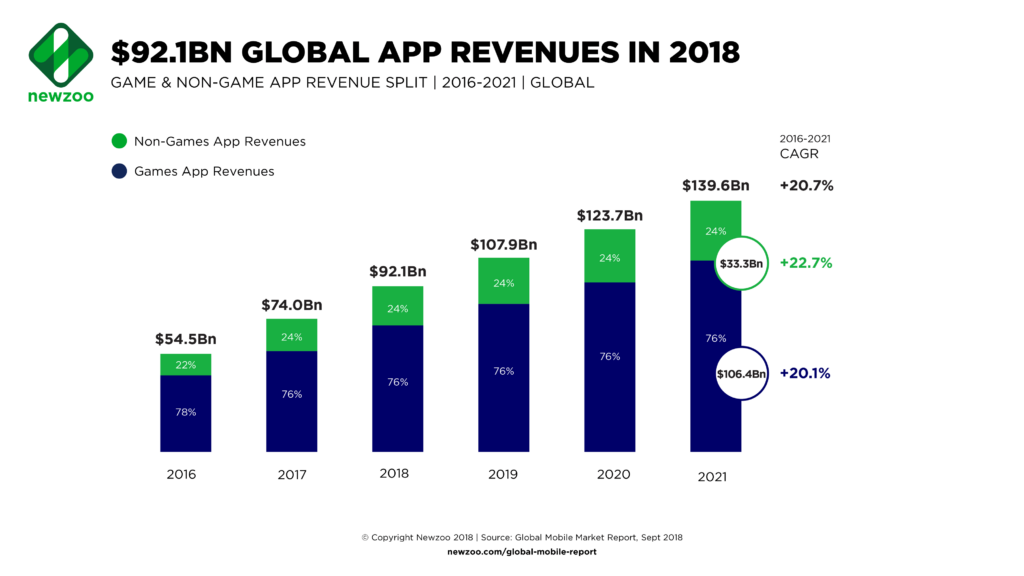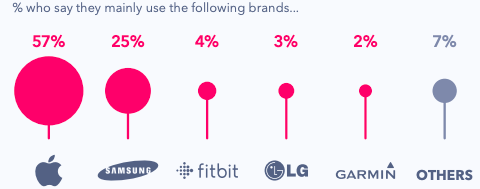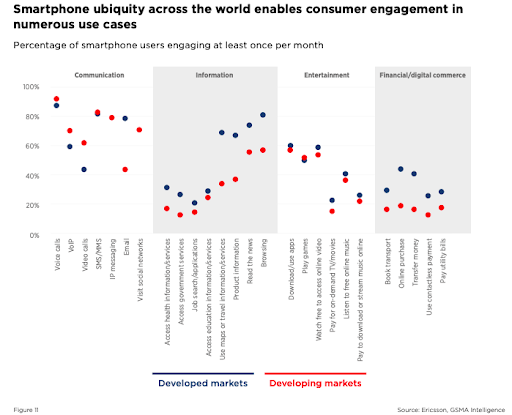The mobile app development industry is dominating the world. That’s due to the increasing desire of a random user to benefit from better services and enhanced user experience that more and more app development companies offer through their apps powered with modern technologies.
Without a doubt, the app development industry will rule within the next decade. Let’s see below what our assumptions are based on!
Main points
- the popularity of wearable devices (Apple Watch Series 3, Fitbit Versa, Amazfit Bip, Garmin Vivosport, Huawei Watch 2 LTE)
- 3.3 billion smartphone and 10 billion IoT connections are expected to reach in 2019, and more than 7 billion and 25 billion estimated by 2025 respectively
- growth of social media penetration: from 28% in 2014 to 40% in 2017
- share of mobile apps developed outside the US and Europe increased to 35%, from 28% in 2014
- growth of number mobile payments: PayPal CEO, Dan Schulman, thinks the company could process more than $100 billion worth of transactions, in comparison with $75 billion in 2016
Market potential
Growth of the numbers of smartphone wearable devices users is the key driver for today mobile market. But, even those by 2021, the total number of smartphone users globally will grow to 3.8 billion—just under half (48%) of the global population, the growth rate is cooling down in all key indicators. This situation not only according to changes in previous compatible periods but also due to the mobile ecosystem become weightier part of our lives.
Newzoo notes that the increasing number of smartphone users means that there is ample opportunity for increased revenues as companies continue to monetize their services. Revenues from non-game apps will increase at a higher rate as companies determine the best ways to monetize their services on app stores and within apps themselves.

Talking about money terms of market, there the following points:
- 76% of paid mobile apps belong to the game industry
- Average Compound Annual Growth Rate (CAGR) 2016-2021 is 20,7%, while this ratio for non-game applications is 22,7%
- the Year-Over-Year (Y-o-Y) change had been slowing down from 36% in 2017 to 13% in 2021
- among non-game preferences are the following areas: social, dating, music/video, Google
- top smartphone penetration located in the UK (82%), Netherlands (79%), Germany (78%) and other countries of Western Europe (58%-77%), US and Canada amounted 77% and 72% respectively
What trends drive the future
#1. Focus on security
A majority of US consumers (56%) feel that mobile payments increase the chance of fraud and theft, according to a study by YouGov released recently. As a result, those customers prefer to use debit or credit cards (49%) or even cash and checks (36.1%).
#2. Apps for small business
Interest for apps development from small business to promote these products: 55% of small businesses say that they’re developing an app to increase sales.
#3. Wearable devices adoption
As International Data Corporation research shows, there is a 31.4% growth in the wearable market (or 59.3 million units) in the 4th quarter of 2018. Surely these numbers may be inflated by holiday sales, but the increasing popularity of wearables is undeniable. There are 172.2 million devices shipped throughout 2018 which is more than 27.5% comparing to 2017. It's also more than double the 10.3% growth that 2017 saw over 2016.
Apple leads the way for smartwatch engagement in the UK and the USA.

#4. Utility segments for mobile technologies
Talking about mobile payments, eMarketer estimates 938.2 million individuals—or 36.0% of smartphone users—will use a mobile phone proximity payment app in 2019, a 13.5% year-over-year increase.

Developing countries today are quite slow in mobile technologies adoption within the information and financial spheres. This leads us to assume the potential growth of such segments adoption in the nearest future precisely in the developing countries.
#5. Growth outside
In 2017, 35% of all mobile applications were developed outside of North America and Europe, and 25% were from low- and middle-income countries (up from 28% and 15% respectively in 2014). This has generated significantly more mobile content in local languages.
Assuming factors of smartphone penetration, the concentration of developers we can say that the hype and innovation adoption of mobile technologies passed in developed countries, while today stable adoption is expected in developing countries, first of all, China, India, etc.
Conclusions
Mobile apps make a great impact on our lives. Users become more demanding. It makes the Top Mobile App Development Companies explore further and enhance app quality with modern technologies and original approaches.
This tendency will continue progressing within the next decade and increase its impact on many other industries starving for innovations.
Let’s make the inevitable reality together!




